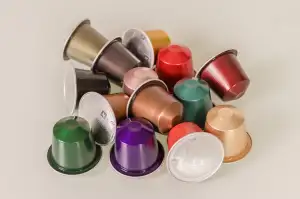DIY Fruit Fly Trap: Eliminate Pesky Pests with this Simple Home Solution

Fruit fly infestations can be a common nuisance in homes, especially during the warmer months. These tiny pests are attracted to ripe and decaying fruits, vegetables, and other organic matter. They can quickly multiply and become a major annoyance, buzzing around your kitchen and contaminating your food. Fruit flies are not only unsightly but also carry bacteria and pathogens that can pose health risks. It is crucial to take action to eliminate these pesky pests from your home.
Importance of using a fruit fly trap
Fruit fly infestations can be a nuisance in homes, especially during the warmer months. These tiny pests are attracted to ripe or decaying fruits and vegetables, as well as moist areas such as drains and garbage disposals. While they may seem harmless, fruit flies can quickly multiply and become a major annoyance. This is where a fruit fly trap becomes essential. Using a fruit fly trap is important because it helps to effectively eliminate these pesky insects from your home. It not only reduces their population but also prevents them from breeding further. By trapping the adult flies, you can break their life cycle and prevent future infestations. Additionally, using a trap is a safe and chemical-free method of control, making it an ideal solution for households with children or pets. So, don't let fruit flies take over your kitchen - invest in a fruit fly trap and enjoy a pest-free environment!
Materials required for a DIY fruit fly trap
To make your own DIY fruit fly trap, you will need a few simple materials that are easily available. Here's what you'll need:
1. A small glass or plastic container with a lid: This will serve as the main body of the trap and should be able to hold liquid.
2. Apple cider vinegar or red wine: Fruit flies are attracted to the sweet aroma of these liquids, making them ideal baits for the trap.
3. Dish soap: Adding a few drops of dish soap to the bait helps break the surface tension of the liquid, causing fruit flies to sink and drown when they come in contact with it.
4. Plastic wrap or a rubber band: You'll need this to cover the top of the container and create a small opening for fruit flies to enter.
With these basic materials on hand, you're ready to start building your own effective fruit fly trap right at home.
Step-by-step instructions for making a fruit fly trap
Step 4: Step-by-step instructions for making a fruit fly trap
1. Take a small glass or jar and fill it halfway with apple cider vinegar. Fruit flies are attracted to the scent of vinegar, which will lure them into the trap.
2. Add a few drops of dish soap to the vinegar. The soap will break the surface tension of the liquid, causing the fruit flies to sink and drown when they come in contact with it.
3. Cover the top of the glass or jar with plastic wrap and secure it tightly with a rubber band. Make sure to leave some space between the plastic wrap and the liquid, creating a small opening for the fruit flies to enter.
4. Use a toothpick or fork to poke several small holes in the plastic wrap. These holes will allow the fruit flies to enter but make it difficult for them to escape once inside.
5. Place the trap in areas where you have noticed fruit fly activity, such as near ripe fruits or vegetables, garbage cans, or compost bins.
6. Leave the trap undisturbed for at least 24 hours to allow enough time for fruit flies to be attracted and caught.
By following these simple steps, you can easily create an effective fruit fly trap using common household items.
Tips for effective placement of the trap
When it comes to effectively placing your DIY fruit fly trap, there are a few key tips to keep in mind. First, it's important to locate the trap near the source of the fruit flies. This could be a bowl of overripe fruit or a compost bin. Placing the trap nearby will increase its effectiveness in attracting and trapping the pests.
Secondly, make sure to position the trap in an area where it won't be disturbed or knocked over easily. Fruit flies are attracted to the scent of fermenting fruits, so keeping the trap undisturbed will ensure that they are lured into it.
Additionally, consider placing multiple traps throughout your home if you have a widespread fruit fly infestation. This will increase your chances of capturing more flies and reducing their population.
Lastly, avoid placing the trap near areas where you prepare or consume food. While the trap is effective at catching fruit flies, you don't want them lingering near your meals. Instead, opt for locations such as windowsills or countertops away from food preparation areas.
By following these placement tips, you can maximize the effectiveness of your DIY fruit fly trap and enjoy a pest-free home.
Maintenance and disposal of the fruit fly trap
Maintenance and disposal of the fruit fly trap are essential for its effectiveness. Regularly check the trap to ensure it is clean and free of dead flies. Empty the trap when it becomes full or every few days, whichever comes first. Dispose of the contents in a sealed bag and throw it in an outdoor garbage bin to prevent any escape or further infestation. Clean the trap with warm soapy water before refilling it with fresh bait. Remember to replace the bait regularly to keep attracting fruit flies. By maintaining and disposing of the trap properly, you can ensure its continued success in eliminating pesky pests from your home.
Additional preventive measures to control fruit fly population
To further control the fruit fly population in your home, there are a few additional preventive measures you can take. First, make sure to regularly clean your kitchen and dispose of any overripe or rotting fruits and vegetables. These are prime breeding grounds for fruit flies. Additionally, keep your garbage cans tightly sealed and empty them frequently to prevent fruit flies from being attracted to the odor. It is also important to clean up any spills or food crumbs immediately as they can attract fruit flies. Lastly, consider using mesh screens on windows and doors to prevent fruit flies from entering your home in the first place. By implementing these preventive measures alongside the DIY fruit fly trap, you can effectively eliminate these pesky pests and enjoy a fruit fly-free home.
In conclusion, with the help of this DIY fruit fly trap, you can finally say goodbye to those pesky pests in your home. By using simple materials and following the step-by-step instructions, you can easily create an effective trap that will attract and eliminate fruit flies. Remember to place the trap strategically and regularly maintain it for optimal results. Additionally, implementing preventive measures such as keeping your kitchen clean and storing fruits properly will further control the fruit fly population. Enjoy a fruit fly-free home and savor your meals without any unwanted visitors!
Published: 30. 11. 2023
Category: Home



